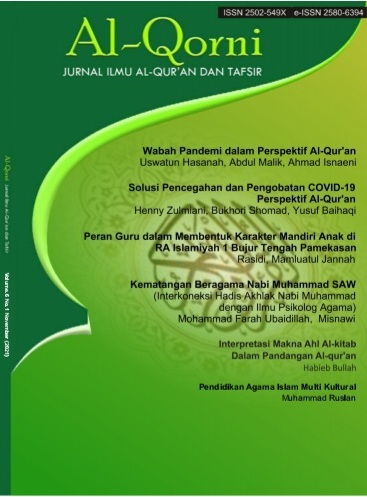Peran Guru dalam Membentuk Karakter Mandiri Anak di RA Islamiyah I Bujur Tengah
Abstract
This study aims to determine the role of teachers in shaping the independent character of children in RA Islamiyah I Central Longitude. This type of research is a phenomenological qualitative study. Sources of data obtained through interviews, observations, and documentation. The informants are the principal and the teacher. While checking the validity of the data is done through extended participation, perseverance of observation, and triangulation. The results showed that: first, the role of the teacher was very helpful in the formation of the independent character of children who are accustomed to being helped by their parents when at home, can do their own activities at school and children's activities at home. Second, the teacher's strategy is to take a direct approach to children by including independent character education in the learning process, so that the teacher can give children activities that lead to habituation, example and discipline. Third, the teacher inhibiting factor in forming the child's independent character is the lack of understanding from parents of children who are over protective of children in school. In addition, the learning time which is only about one hour makes children interact less with their peers and the school environment. Fourth, the solution of the inhibiting factors for the formation of the child's independent character is the understanding of the child's parents in the form of not accompanying the child into the classroom. In addition, the addition of class hours is to provide additional time for children to interact more with friends and the school environment. The results showed very good, seen from the daily activities of children who were able to carry out their own activities without the help of others. This can be seen from the results of student data who have developed according to expectations in class A as many as 50%, namely 13 children, while in class B as many as 80% namely 17 children.Downloads
Published
2021-01-03
Issue
Section
Articles
License

This work is licensed under a Creative Commons Attribution-NonCommercial-ShareAlike 4.0 International License.
AL-QORNI COPYRIGHT NOTICE
- Seluruh materi yang terdapat dalam situs ini dilindungi oleh undang-undang. Dilarang mengutip sebagian atau seluruh isi situs web ini untuk keperluan komersil tanpa persetujuan dewan penyunting jurnal ini.
- Apabila anda menemukan satu atau beberapa artikel yang terdapat dalam AL-QORNI yang melanggar atau berpotensi melanggar hak cipta yang anda miliki, silahkan laporkan kepada kami, melalui email pada Priciple Contact.
- Aspek legal formal terhadap akses setiap informasi dan artikel yang tercantum dalam situs  jurnal ini mengacu pada ketentuan lisensi Creative Commons Atribusi-ShareAlike (CC BY-SA).
- Semua Informasi yang terdapat di AL-QORNI bersifat akademik. AL-QORNIÂ tidak bertanggung jawab terhadap kerugian yang terjadi karana penyalah gunaan informasi dari situs ini.


